-
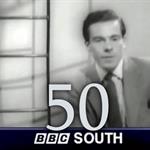
by NFA Media ArchiveOctober 11, 2023
🎬BBC South 50 years: Episode 19 The News. A series of 19 mini-features made by BBC South at Southampton in 2011 to celebrate the station's 50 year history.
Episode 19 The News. How the news has changed over the years. In the early days it was mainly voiced over captions and still photos. Also a look at Vox Pops and encounters with animals.
NFG are indebted to the BBC staff at Southampton for their help in sourcing items for the archive. See more episodes in the Category - BBC South.
3656 Views
-
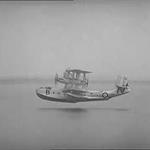
by NFA Media ArchiveOctober 11, 2023
🎬British Pathé – The RAF train pigeons to send messages from aircraft, Calshot, Hampshire. Pigeons being tested by the RAF in Calshot, Hampshire. Full titles read: "CALSHOT" L/S's of a basket with pigeons being loaded onto and RAF (Royal Airforce) flying boat. Good L/S's of the large aeroplane taking to the sky. M/S's of a man releasing a homing pigeon from the cockpit of the aircraft. L/S's and M/S's of an RAF man collecting the pigeon after it has returned home, he holds it upside down and then and takes the message attached to it's ring off
3975 Views
-
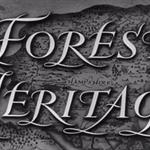
by NFA Media ArchiveOctober 11, 2023
🎬 The New Forest. A film exploring the rich landscape, people and forest traditions in the post war years.
18th century Agisters and pigs with rights to wander are just some of the ancient traditions celebrated in this beguiling look at life in the New Forest. Less familiar sights are captured, too, such as broom making and logging, forestry planting and sailing on the River Beaulieu near Buckler's Hard. No film about the area would be complete, though, without the famous Forest ponies – who are seen here in all their equine glory.
Filmmaker Roy Layzell made many films during this period including other local area films such as Pipelines Under Southampton Water in 1957.
Clifton Parker was a renowned British composer. With nearly 50 feature films under his belt, including The 39 Steps in 1959 and Sink The Bismark in 1960.
John Snagge (OBE) was the voice of the BBC from the war years to his retirement in 1980.
Featuring John Snagge
Music by Clifton Parker
Filmed and Directed by Roy Layzell
Original Cinema Release 1952
The film was commissioned by the Esso Petroleum Company in 1952, just as they were establishing a new refinery on the eastern edge of the New Forest at Fawley, but Forest Heritage is entirely concerned with the natural beauty and traditions of the area: ‘A place out of this modern world where simple pleasures are enough – a miraculous survival of pre-Norman England’.
10854 Views
-
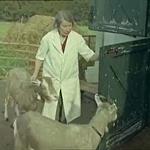
by NFA Media ArchiveNovember 20, 2023
🎬British Pathé – An item about goats - they are bred for their milk and to help trim the turf roof of the owners log cabin. New Forest, Hampshire. Various shots of a Norwegian style log cabin with a turf roof. On the roof, a goat nibbles the turf to keep it trim, its leash is held by a woman. C/U of a goat. M/S of a goat jumping over a fence. M/S of a herd of goats going into a barn. A woman goes into a pen and separates a Billy from a Nanny goat. She leads the Nanny onto a bench to milk her. Various shots of the goat being milked. M/S of the Billy goats - they are kept away from the Nannies as they make the milk smell (!?). Various shots of Billies in a field butting each other. The goats are all British Toggenburg. One of women featured is Mrs. M. E. Platten (sp.)
3175 Views
-
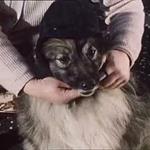
by NFA Media ArchiveOctober 11, 2023
🎬British Pathé – William Nicholson is a vintage car enthusiast that likes to take his dog motoring with him. Various shots of Mr. N. polishing an old Bentley, one of a row of vintage cars. Mr. N. opens a bonnet to clean the motor of a Hispano Sura. C/U of a "hand carved stalk" on top of a radiator. M/S of vintage car, pan to Mrs. N sitting nearby, sewing a hat. She places the hat on her dog. Mrs. N leads the dog to the car, a 1928 Bentley. Mr. N. is sitting in the driving seat. Mrs. N places some goggles over the dog's head. Mrs. N waves to her husband and dog as they drive off. Various shots of Mr N. and his dog speeding down country lane. C/U of the dog in goggles and a hat (he wears them to so he doesn't get cold ears and runny eyes). The dog is a Keeshund, otherwise known as a Dutch barge dog (looks a bit like Lassie). Other cars featured are - a 1947 Silver Wraith Rolls Royce, 1930 Speed 6 Bentley and a 1927 A.C.G. (sp?). Cuts exist - please see separate record
3413 Views
-
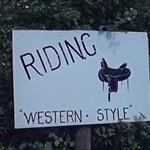
by NFA Media ArchiveNovember 20, 2023
🎬British Pathé – Ordinary mortals get the chance to be cowboys and cowgirls in Hampshire. Story about the Flying G Ranch where friends and holidaymakers can enjoy "life on the range" and pretend to be cowboys. The ranch is owned by the transatlantic airline pilot Captain Leslie Gosling. C/U of a gun being loaded with bullets, cut to show man in cowboy hat and glasses (looks a bit incongruous) who is holding the gun. Horses are saddled up for a ride. Various footage of the holidaymakers riding their steeds around the ranch and out in open fields. They run into the local hunt which again looks strange - worlds colliding. Nice majestic western music accompanies shots of the riders. C/U of hamburgers being barbecued as the ramblers return for an outdoor feast. Good shots of the food being distributed and the riders enjoying their meals. A young cowboy and cowgirl polish their saddles. "We've never seen a sharpshooter in horn rimmed glasses before" quips the narrator as our friend from earlier shoots a few rounds and knocks down a few cans. The cowboys and cowgirls sit around on blankets listening to one of their group playing the guitar. I want to go. Cuts exist - see separate record
8399 Views

Processing Video - Please Wait!
Update Required
To play the media you will need to either update your browser to a recent version or update your

Processing Video - Please Wait!
Update Required
To play the media you will need to either update your browser to a recent version or update your
Update Required
To play the media you will need to either update your browser to a recent version or update your
Update Required
To play the media you will need to either update your browser to a recent version or update your
🎬BBC South 50 years: Episode 19 The News. A series of 19 mini-features made by BBC South at Southampton in 2011 to celebrate the station's 50 year history.
Episode 19 The News. How the news has changed over the years. In the early days it was mainly voiced over captions and still photos. Also a look at Vox Pops and encounters with animals.
NFG are indebted to the BBC staff at Southampton for their help in sourcing items for the archive. See more episodes in the Category - BBC South.
🎬British Pathé – The RAF train pigeons to send messages from aircraft, Calshot, Hampshire. Pigeons being tested by the RAF in Calshot, Hampshire. Full titles read: "CALSHOT" L/S's of a basket with pigeons being loaded onto and RAF (Royal Airforce) flying boat. Good L/S's of the large aeroplane taking to the sky. M/S's of a man releasing a homing pigeon from the cockpit of the aircraft. L/S's and M/S's of an RAF man collecting the pigeon after it has returned home, he holds it upside down and then and takes the message attached to it's ring off
🎬 The New Forest. A film exploring the rich landscape, people and forest traditions in the post war years.
18th century Agisters and pigs with rights to wander are just some of the ancient traditions celebrated in this beguiling look at life in the New Forest. Less familiar sights are captured, too, such as broom making and logging, forestry planting and sailing on the River Beaulieu near Buckler's Hard. No film about the area would be complete, though, without the famous Forest ponies – who are seen here in all their equine glory.
Filmmaker Roy Layzell made many films during this period including other local area films such as Pipelines Under Southampton Water in 1957.
Clifton Parker was a renowned British composer. With nearly 50 feature films under his belt, including The 39 Steps in 1959 and Sink The Bismark in 1960.
John Snagge (OBE) was the voice of the BBC from the war years to his retirement in 1980.
Featuring John Snagge
Music by Clifton Parker
Filmed and Directed by Roy Layzell
Original Cinema Release 1952
The film was commissioned by the Esso Petroleum Company in 1952, just as they were establishing a new refinery on the eastern edge of the New Forest at Fawley, but Forest Heritage is entirely concerned with the natural beauty and traditions of the area: ‘A place out of this modern world where simple pleasures are enough – a miraculous survival of pre-Norman England’.
🎬British Pathé – An item about goats - they are bred for their milk and to help trim the turf roof of the owners log cabin. New Forest, Hampshire. Various shots of a Norwegian style log cabin with a turf roof. On the roof, a goat nibbles the turf to keep it trim, its leash is held by a woman. C/U of a goat. M/S of a goat jumping over a fence. M/S of a herd of goats going into a barn. A woman goes into a pen and separates a Billy from a Nanny goat. She leads the Nanny onto a bench to milk her. Various shots of the goat being milked. M/S of the Billy goats - they are kept away from the Nannies as they make the milk smell (!?). Various shots of Billies in a field butting each other. The goats are all British Toggenburg. One of women featured is Mrs. M. E. Platten (sp.)
🎬British Pathé – William Nicholson is a vintage car enthusiast that likes to take his dog motoring with him. Various shots of Mr. N. polishing an old Bentley, one of a row of vintage cars. Mr. N. opens a bonnet to clean the motor of a Hispano Sura. C/U of a "hand carved stalk" on top of a radiator. M/S of vintage car, pan to Mrs. N sitting nearby, sewing a hat. She places the hat on her dog. Mrs. N leads the dog to the car, a 1928 Bentley. Mr. N. is sitting in the driving seat. Mrs. N places some goggles over the dog's head. Mrs. N waves to her husband and dog as they drive off. Various shots of Mr N. and his dog speeding down country lane. C/U of the dog in goggles and a hat (he wears them to so he doesn't get cold ears and runny eyes). The dog is a Keeshund, otherwise known as a Dutch barge dog (looks a bit like Lassie). Other cars featured are - a 1947 Silver Wraith Rolls Royce, 1930 Speed 6 Bentley and a 1927 A.C.G. (sp?). Cuts exist - please see separate record
🎬British Pathé – Ordinary mortals get the chance to be cowboys and cowgirls in Hampshire. Story about the Flying G Ranch where friends and holidaymakers can enjoy "life on the range" and pretend to be cowboys. The ranch is owned by the transatlantic airline pilot Captain Leslie Gosling. C/U of a gun being loaded with bullets, cut to show man in cowboy hat and glasses (looks a bit incongruous) who is holding the gun. Horses are saddled up for a ride. Various footage of the holidaymakers riding their steeds around the ranch and out in open fields. They run into the local hunt which again looks strange - worlds colliding. Nice majestic western music accompanies shots of the riders. C/U of hamburgers being barbecued as the ramblers return for an outdoor feast. Good shots of the food being distributed and the riders enjoying their meals. A young cowboy and cowgirl polish their saddles. "We've never seen a sharpshooter in horn rimmed glasses before" quips the narrator as our friend from earlier shoots a few rounds and knocks down a few cans. The cowboys and cowgirls sit around on blankets listening to one of their group playing the guitar. I want to go. Cuts exist - see separate record